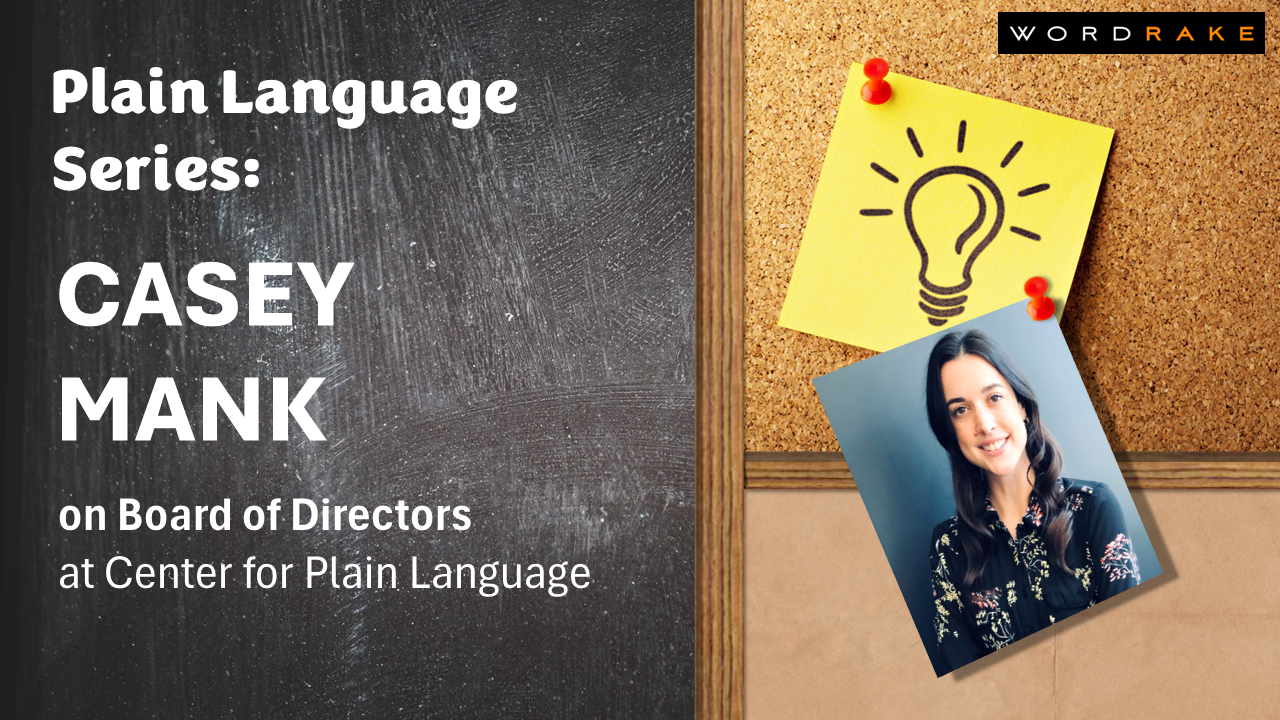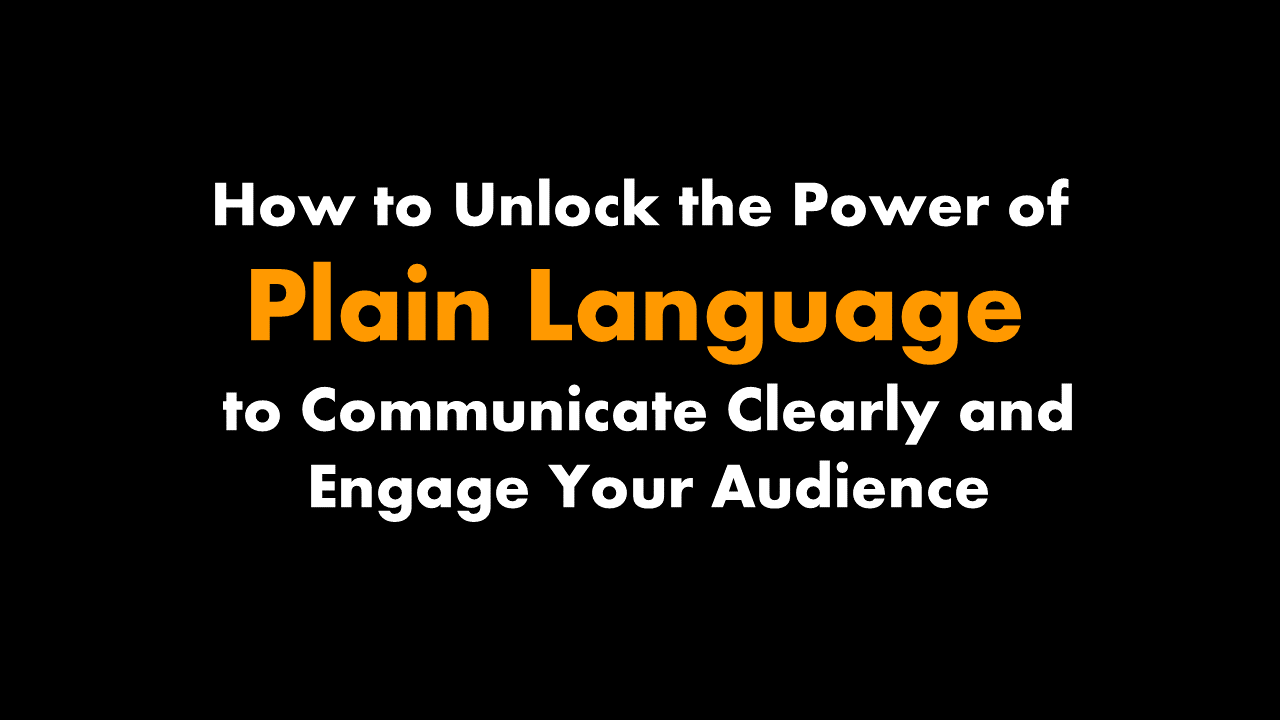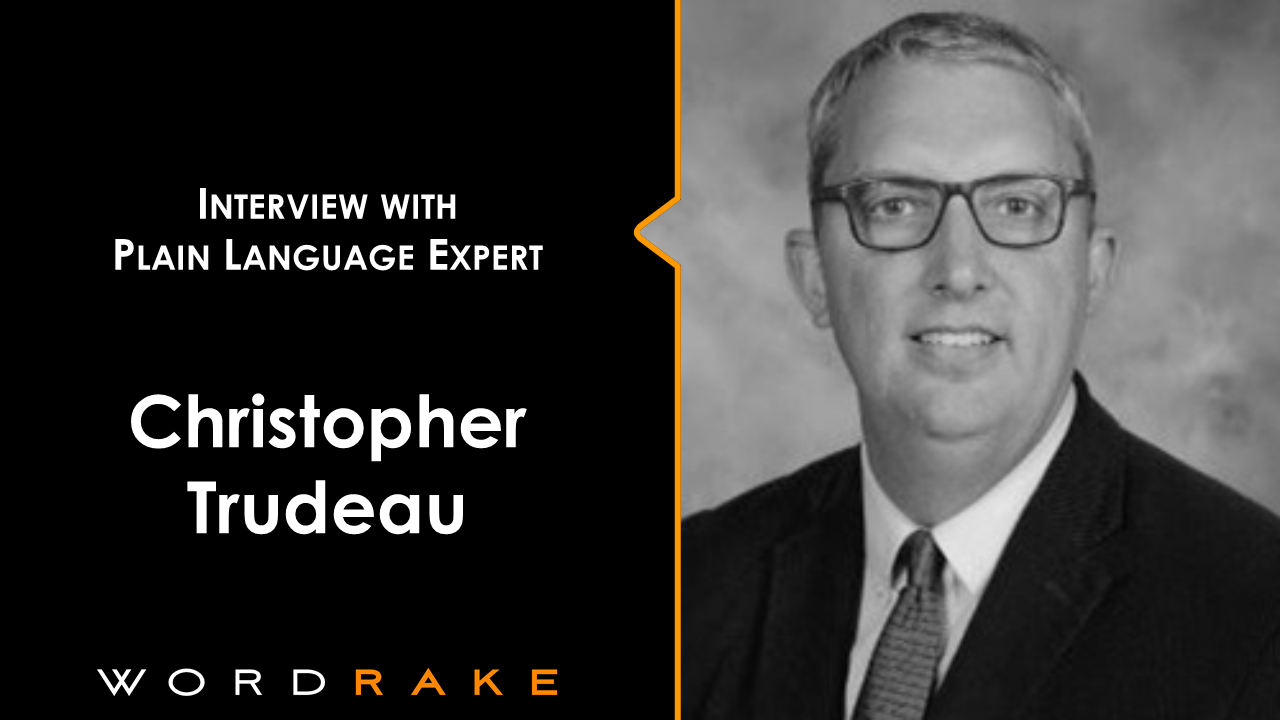You can write your documents in short sentences with small words, and they may still not qualify as "plain language." As Center for Plain Language board member Casey Mank explains, plain language is about usability as much as readability. Learn more below as Casey describes what makes a document successful, and how to integrate plain language into your own writing and design.
What is your role and how is it connected to plain language?
I serve on the board of directors at the Center for Plain Language. We are a nonprofit that helps government agencies and businesses write clearly. I’m currently serving my second term on the board and have previously been the Head Judge for the Center’s annual ClearMark Awards. The ClearMarks recognize the very best Plain Language work across industries and in 3 languages.
My company, Bold Type, provides writing training of all kinds, including workshops on Plain Language Writing and Plain Language Summaries. We also offer Plain Language writing coaching. And no matter the writing topic, Plain Language is the foundation of our approach to everything we teach, from email etiquette classes to designing presentation decks.
What is the difference between plain language and plain English?
The goal is that Plain Language principles can work in any language. Plain English might include a lot of English-specific advice, whereas Plain Language principles should be, ideally, transferable across languages and cultural contexts. Even if specific features of a language are different, the idea of centering the audience, answering their questions, and making information easy to find should be universal.
For example, English goes from left to right on the page. So we teach people to put important information on the left, where readers tend to look first. In almost every Plain Language workshop I do, someone will ask “is this still true in a language like Arabic, that starts on the right?” And the answer is no, it’s the reverse. So while a Plain English a guideline might be “keep important info on the left,” the more transferrable, Plain Language version would be something like “keep important info where readers will look first within documents, pages, or sections.”
And Plain Language is very much an international movement. PLAIN, Plain Language Association International, has members from all over the world working in all different languages. At the Center for Plain Language, which is North America-based, we evaluate ClearMark entries in English, Spanish, and French.
How are readability and plain language related?
Readability is a component of Plain Language, but readability alone is not Plain Language. This is one shortcoming of our name! The name “Plain Language” doesn’t necessarily capture all of the user experience (UX), accessibility, design, and audience awareness elements of effective Plain Language content.
If something is very easy to read but poorly designed and formatted, it’s not Plain Language. Likewise, if something is very readable and conversational but not tailored to the audience who will actually use it, it’s not Plain Language. Readability is very important, but it’s only one piece of the puzzle.
What are some factors that indicate a need to write in plain language?
If the people you communicate with are repeatedly missing the point, taking the wrong action step, or not answering your questions, there’s a need for Plain Language.
For example, if you send out a reminder that everyone needs to bring their laptop to the monthly meeting and, consistently, half the people in the meeting arrive without their laptops, you haven’t communicated clearly. Or if you send someone an email and they answer your either-or question with “yes!”, you haven’t communicated clearly. These are smaller, interpersonal examples.
At the organization level, you can think about things like site visitors failing to fill out forms completely or accurately, customers agreeing to terms they haven’t read, patients coming in for medical procedures unprepared when they were supposed to fast, etc. Any type of user error from small to large is an opportunity to communicate more clearly. Plain Language—communicating clearly and then testing your assumptions with user testing—can help you do that.
What’s the most important—yet simple—change professionals can make to consumer-facing documents to improve understanding?
Speak to consumers instead of about them. Non-specialists can’t always tell that information is about them, their choices, their options, or their responsibilities when it is in the third person. For example, a reader will know that “you must fill out all forms before scheduling your appointment” is about them and that it’s something they should pay attention to. On the other hand, if they are distracted or in a hurry, they might breeze right past “interested parties must fill out the included forms before scheduling an appointment.”
Where will consumers commonly encounter the most confusing language?
Simply put, in the “fine print.” Cell phone plan contracts, updated terms and conditions for software, healthcare coverage explanations of benefits. These are things that we use yearly or even monthly for pretty important aspects of our lives, but most of us can’t read or understand them in a meaningful way. It’s not just that we skip them because they are long and boring. Even if we took the time to read these documents, we probably wouldn’t be able to explain them to someone else.
Beyond writing with simpler words and shorter sentences, what else can professionals do to communicate better for the public’s benefit?
I really like to see documents that offer an honest preview of their content so that readers can make quick decisions about whether to keep reading. This could look like key findings at the top of a research article, fast facts accompanying a longer report, an email that starts with its ask right away. The point is to help readers make decisions about whether they want to read something, rather than forcing them to read halfway through before they know if this is something they would have wanted to read.
People are so busy and so inundated with information. If your content can help readers make fast, informed decisions about what to pay attention to, they will really thank you for it.
What’s one piece of advice that you would offer to help a professional start using plain language?
I’ll offer a two-for-one piece of advice: break up long sentences and break up long paragraphs. This doesn’t require a lot of strategy, editing expertise, or time. It’s simple: if you see a long paragraph, make it into two shorter paragraphs. And if you see a long sentence, make it into two shorter sentences.
This is something every writer can do—quickly—without significant rearranging or rewriting required. But it will make your whole document look easier and your text much easier to read. It’s a great first step for looking at your content in a Plain Language way.
What’s the most convincing statistic that you can share to convince professionals to start using plain language?
76 percent of people are more likely to recommend a brand that delivers simple experiences. (Source)
About Casey Mank
Casey Mank serves on the board of directors at the Center for Plain Language and has served as the Head Judge for the Center’s annual ClearMark Awards, recognizing the best in Plain Language work across industries. She is the Co-founder of Bold Type, a women-owned communications training firm. Casey has led writing workshops at organizations including Kellogg’s, Sephora, Viacom Media, the National Association of Government Communicators, the PR Society of America, and many more. Casey also teaches writing at Georgetown University’s School of Nursing. She is proud to have helped thousands of students and professionals get to the point and reach their audiences with greater impact. You can find her on LinkedIn.
About WordRake and International Plain Language Day
Plain Language experts Cheryl Stephens and Kate Harrison Whiteside created International Plain Language Day on October 13, 2011 to celebrate the first anniversary of the signing of the Plain Language Act in the United States. Since then, plain language enthusiasts take time each year to celebrate the gains the movement has made.
In October 2022, WordRake celebrated Plain Language Day by releasing their new Simplicity editing mode to help comply with plain language laws. As firm believers in the importance of clear communication, WordRake celebrates October 13th by highlighting experts and leaders in the plain language field. To see how WordRake can help you simplify your writing, take a 7-day free trial today!









